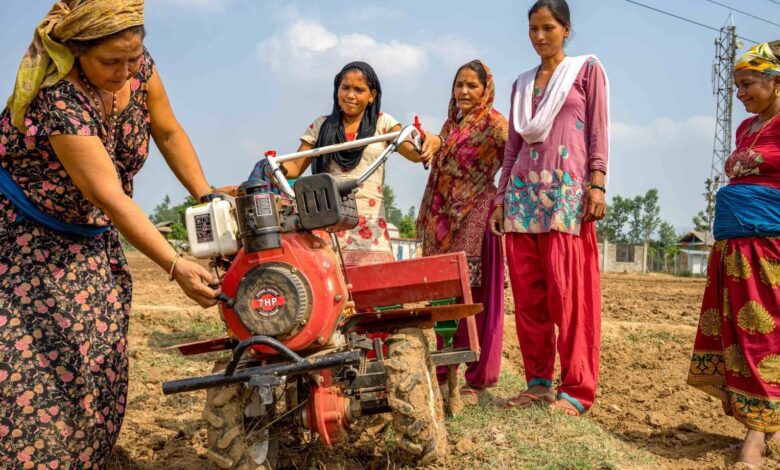
India has recently recorded a small rising trend in the female labor force participation rate or FLFPR, an indicator that has been declining for quite some time now. The latest Periodic Labour Force Survey data also reflect that still 29. 4% of the women population in the age group of 15-59 years were in the Indian workforce during 2021-22, which is slightly below 29. It declined to 8% in the earlier fiscal year. This stagnation is preceded by advancement, showing a cyclical pattern of women’s employment in the largest democracy globally. Therefore, it is not simply a story of women in the Indian workforce; it is a story of gender expectations, economic realities, and transformations in work.
Key Women Employment Statistics in India
- 29.4% of women (aged 15-59) were part of India’s labor force in 2021-22.
- 60% of working women were self-employed in 2021-22.
- 57.3% of working women were employed in agriculture.
- Women earned 2.6 times less than men in self-employment.
- 37% FLFPR reported in 2022-23, a 4.2 percentage point increase from 2021-22.
The evolving landscape of women’s work
The cyclical nature of women’s work
Employment in countries for women typically goes up during the advent of an economic downturn. This trend went up contracyclically during the first half of the COVID-19 pandemic and was also seen in 2019-20 when the FLFPR increased about 5 percent. According to research, women’s labor is like insurance in the lean season for the poorer classes, but this usually only provides temporary relief.
Self-employment: A double-edged sword
60% of women workers are self-employed, this percentage is recognized in the working women of 2021-22. That said, there is a continually progressive trend in the consumption rate of the material in question, although it also has its share of downsides. Over 50% of these women are involved in open but low-paid jobs such as “helpers” particularly in family businesses, which further does not entail any independent income or employment for women nor improve the status of women in the labor market.
Agriculture: A persistent employer
It has also been observed that agriculture is one of the largest employers of women in India at present, with 57 percent. As per the data reported in 2021-22, 3% of the working women are involved in this sector. Even in the case of COVID-19 fallback, the nature of most of the work in agriculture is low productivity with uncertain wages, which may negatively alter the flow of structural transformation in the economy.
The gender wage gap
Generally, regardless of the type of work engagement, women earn relatively less compared to their male counterparts. Self-employment is most affected by this trend, where women are paid $2 for every $3 earned by male self-employed workers. A quarter between April and June 2022 saw women represent 6% of the number of men in the same period. This gap has been increasing over a period of time, and it signifies that the economic disparities that women experience in the workplace have not only been present in the past but also the present.
Emerging trends and future prospects
Recent statistics show that this could be the pinnacle or a starting point of the decline in women’s workforce participation. According to the PLFS report for 2022-23, the FLFPR was recorded as 37%, in contrast to the previous years’ figures. An improvement in this area speaks to more female earners living in rural areas and first-time employment. Scarce, young, and educated females are in paid employment positions.
However, challenges remain. The disproportionate distribution of unpaid care and domestic labor prevails, with Indian women employing an average of 7. On such tasks, the students spend as many as 2 hours compared to 2 hours on similar tasks. 8 hours for men. This is because childcare restricts the working capacity and employment opportunities for mothers, thus creating an imbalance between men and women.
Achieving sustainable employment generation is closely linked to the attempts to make optimal use of demographic dividends and employment opportunities for women. The quest for change and gender equality in employment in the country is still being pursued with mixed achievements and setbacks. For now, the Indian economy stands at a crossroads. The next few years will define whether India can unlock the potential of women employees in terms of production and output.
Conclusion
Women’s employment in India has been a slow but steady evolution, with problems persistently arising. Although there has been an emerging awareness of such activity recently, especially among young, educated women, there are still many barriers. The residual issues include the gender wage differential, the high incidence of unpaid work, and women’s overrepresentation in low-output industries. That said, these issues will have to be dealt with as India progresses.
Finally, supporting the care infrastructure, supporting women in starting businesses, and changing the culture will be decisive in achieving women’s full potential in the labor market. This discussion highlights that the future of India’s economic growth and social development largely depends on women’s participation in the labor market. While the country seeks to reap from its demographic dividend, then, gender equality for women is not a traditional issue but an economic necessity.



